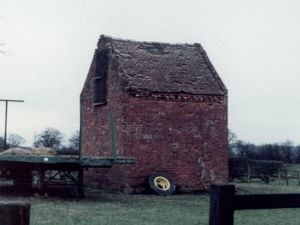'It'll be cool in the future!' - Civic society rubbishes 'concrete monstrosity' claims in campaign launch to save Shirehall
A heritage society insists a council's headquarters is not a "concrete monstrosity" but a great example of modernist architecture.

Shrewsbury Civic Society has begun its campaign to save Shirehall by producing a leaflet outlining the reasons why it should be regarded as an important architectural and historic building.
“We are not arguing that Shropshire Council should stay in the building, but like any building of high architectural quality it shouldn’t be demolished, and instead new uses, or ‘repurposing’, must be found for it,” said society chairman Mike Dinneen.
The council wants to demolish the building and move to a new town centre-based HQ.
In its new leaflet, the civic society counters suggestions that Shirehall is just a ‘concrete monstrosity’. Former council leader Peter Nutting described it as a "big, ugly lump of concrete".
Features of Shirehall which earn the society’s particular praise include the unusual ovoid-shaped council chamber and the remarkable space underneath it with its sculptural pilotis or columns being reminiscent of the works of architectural genius Le Corbusier.
“Don’t just take our word for it” said Martina Chamberlain, chair of the society’s planning committee. “Pevsner’s Buildings of England describe it as ‘the major monument to post-war Modernism in the county’.
"The leading architectural critic, Owen Hatherley, recently claimed that 'There is nothing else quite like it in the county…this is an excellent civic building, well made and individual'. A building this good simply shouldn’t disappear.
"Shirehall’s modern style of architecture may not yet be appreciated by everyone, but as the years unfold and the unfashionable becomes fashionable, as has always happened with previous styles of architecture, we believe Shirehall will be seen as the iconic Shropshire building that it is. Just as once despised Victorian buildings are now admired for their exuberant, even vulgar, ostentation, so the clean lines and honest expression of structure of key buildings of the 1950’s/1960’s are increasingly seen as ‘cool’.
"We think that Shirehall represents more than any other building, Shropshire’s progressive contribution to the built environment in the 1960’s. It reflects the boldness of the age, the freedom of expression and the desire to be imaginative. It must not be demolished!"





